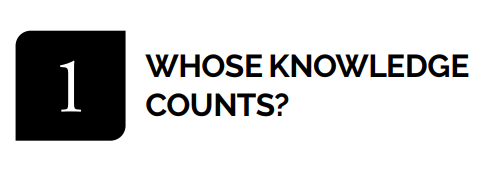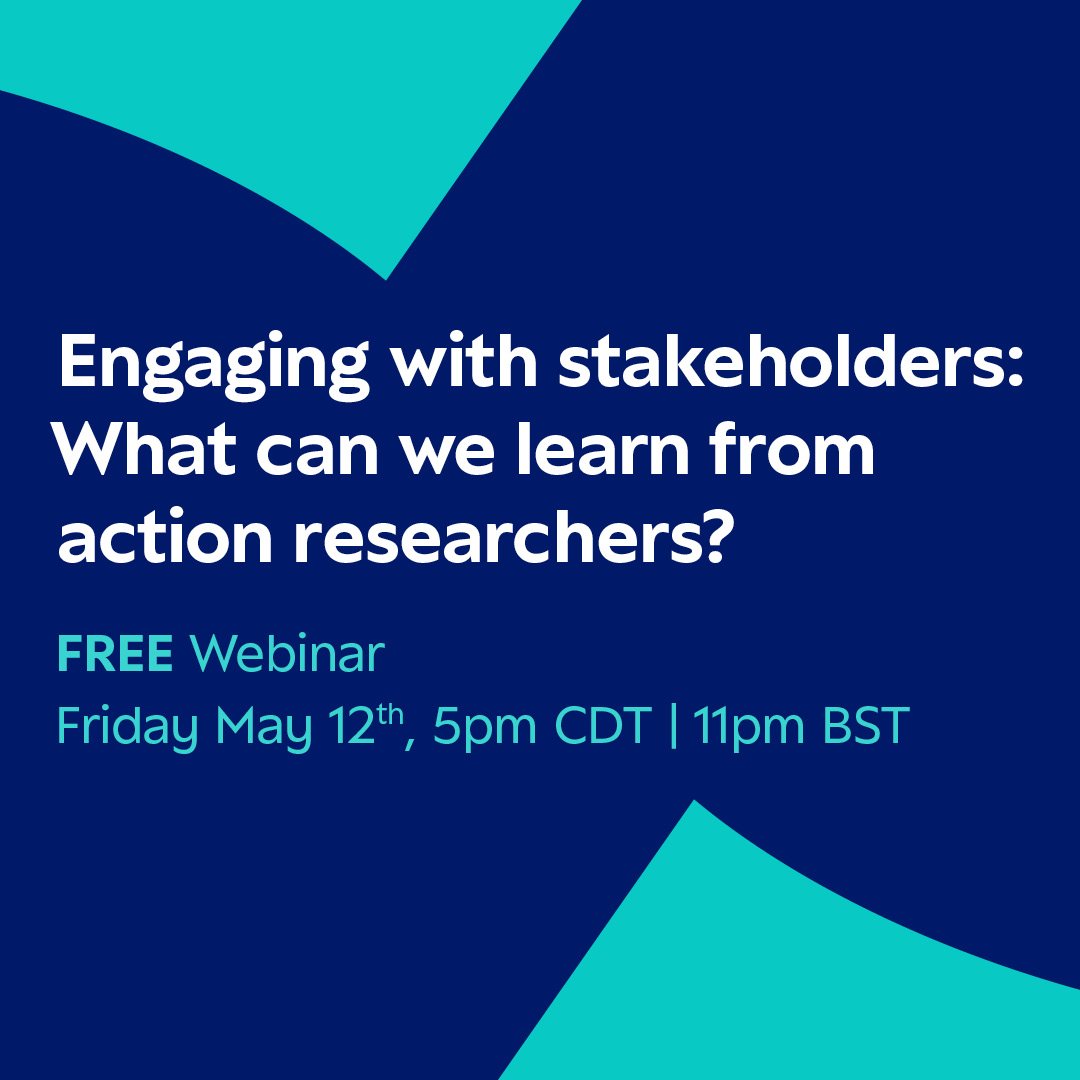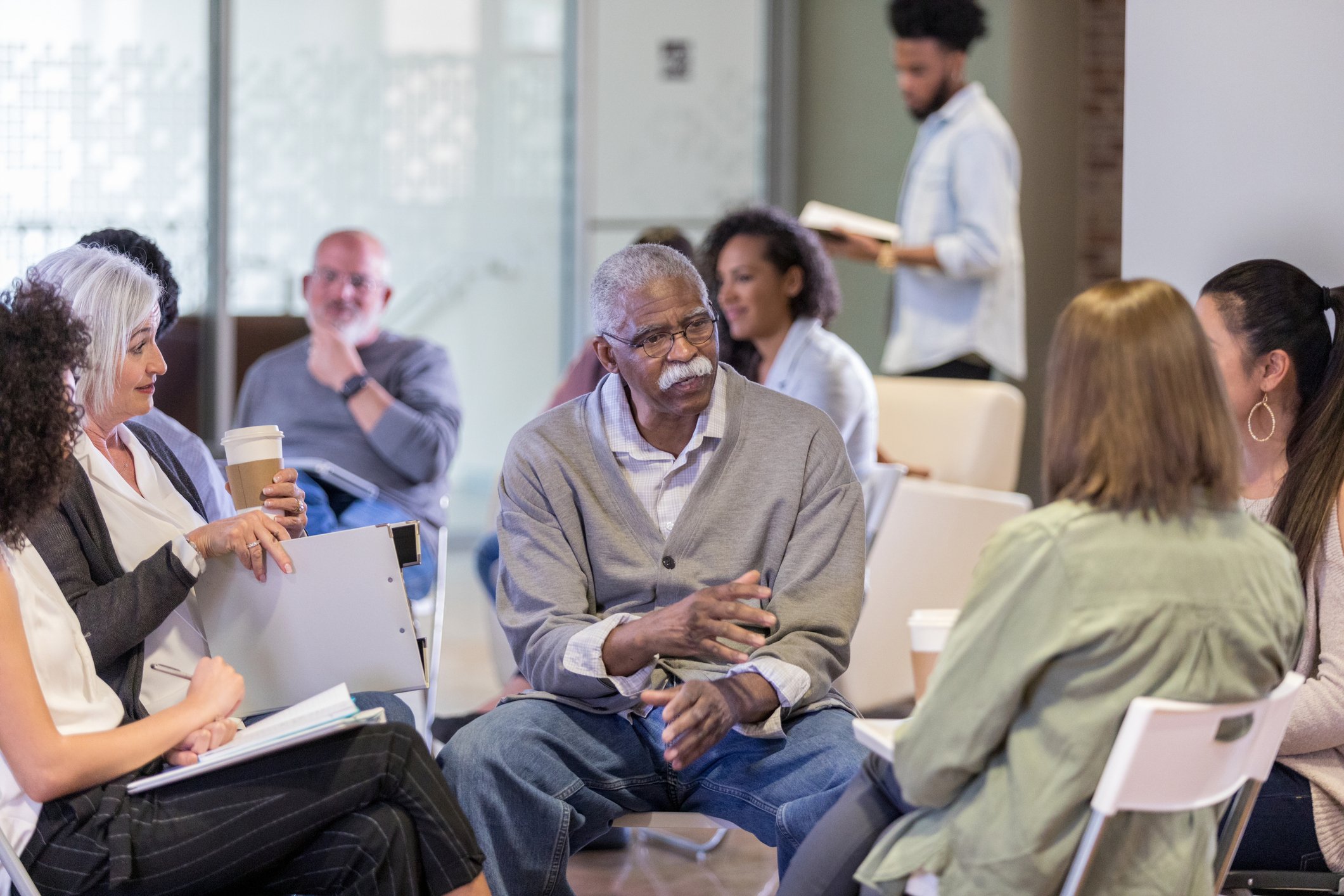What is “Critical Participatory Inquiry”?
How can you conduct research with, not on, communities?
In a new book from Sage, Critical Participatory Inquiry: An Interdisciplinary Guide, co-authors show how action, engaged methods can be used. They include creative and digital methods in a timely book.
Use the code COMMUNIT24 for 25% off through December 31, 2024 when you purchase Critical Participatory Inquiry from Sage.
The authors encourage readers to uncover new possibilities in research guided by the emancipatory roots of CPI to deconstruct inequitable conditions and practices. Weaving together theoretical perspectives, a variety of tools for data collection and analysis, and numerous practical examples, the authors offer a complete picture of the research process from start to finish. This thoughtful and thorough book prepares readers to co-create knowledge effectively and ethically. By addressing the underlying principles common to a variety of action and participatory research methods, readers learn to design and carry out research with, not on, communities.
In this interview co-authors Meagan Call-Cummings, Giovanni P. Dazzo, and Melissa Hauber-Özer define Critical Participatory Inquiry and offer examples.
Discussing Critical Participatory Inquiry
Question: Your title brings in four important concepts: Critical. Participatory. Inquiry. Interdisciplinary. Can you define these terms and unpack your reasons for putting them together?
Response: All these words have so many different definitions. I could probably quote many, many different people – all smarter than I am! – but to offer some basic definitions like what I would offer in a class or chatting with colleagues, I would say that “critical” to me means that we focus on systems and structures. We pay attention to questions of equity and justice. We “critique” how things are, the status quo, the way the world is set up for some to benefit and to have power and others to not benefit. To me, all that is what we pay attention to when we claim a critical stance in inquiry.
Participatory. This term has been coopted so much. A lot of times we see people throw this around when they do focus groups or when they simply engage a diverse “sample” of participants in a study. For me and my co-authors, though, when we say “participatory,” we are talking about meaningful participation – even a centering – of people, experiences, and expertise that is typically pushed to the margins of conventional inquiry processes or even harmed by them. We see this time and again among communities of Color, Indigenous people, women, young people, even teachers. It depends on the context when we consider who has been sidelined or silenced in inquiry, but these are some examples. And then it’s not just about who, but how – how are we including these people in our knowledge creation processes? I mentioned that it has to be meaningful – but meaningful to whom? As university-based researchers, we are not the ones who determine what is meaningful. Rather, it’s the community or group or person we’re working with who should determine that. This is why we talk so much in the book about relationality – you’ve got to build strong, trusting, open relationships with people and communities so that they trust you enough to be open with you about what will be meaningful to them. We often joke that when your co-researchers can tell you “no,” that’s when you know you’ve got a solid enough relationship to engage in inquiry together.
Inquiry. While we often use the words “research” and “inquiry” interchangeably, we see these as two very different processes. “Research” signals to us a kind of neoliberal process obsessed with quantifiable outcomes. More is better. More participants, more funding, more sites, etc. Also, research, while not always true in practice, often connects with a post-positivist notion of detachment – the detached observer. The idea that we need to be separate from our participants or “subjects” in order to extract data from them, remain objective or neutral. So, “research” is tied up with all these assumptions and fallacies (in our minds) about what is true or good or valuable in the context of knowledge creation. Inquiry, on the other hand, pushes against the neoliberal obsession of quantifiable outcomes, neutrality, and detachment to focus on engagement, relationality, and closeness. Inquiry values co-creation, is often iterative, and is anchored in relationships and dialogue.
Interdisciplinary. For us, it was important that readers knew this approach to inquiry is interdisciplinary. Of course, we all come from a school of education, but we do inquiry with communities that engage human rights, psychology, sociology, public health, migration, cultural studies, public policy, and so much more. Critical Participatory Inquiry is not a method. It’s an epistemological stance – we say that a lot in our book and in everything we write and do. It’s a set of values. It’s an orientation to the world. I was doing an interview recently where someone asked me about this and I mentioned that once I began to take this stance in my inquiry it actually “leaked” into my life. This is not just how I do inquiry, like a coat I put on when I need it. This is how I walk through the world now. It informs everything I do – from how I teach to how I parent my children. That moves beyond the idea of “interdisciplinary,” of course, but the idea is that it’s for all – for everyone, for all disciplines, for all inquiry.
Question: You describe CPI as “an epistemology or stance toward knowledge.” How do new researchers, or researchers new to CPI, understand how to put this epistemology into practice in their studies?
Read Chapter one on the book site.
Response: This can be really hard. The three of us did a study early on in our relationship where we collected the journals from several students who had been in my very first class on participatory action research. The journals were an assignment meant to help the students grapple with how they could engage this epistemology in their inquiry and, ultimately, in their own lives. What we learned was that it’s really hard! I mean, we all sort of knew this already, but it was clear as we analyzed the data the students had shared with us (very kindly, I might add) that they really struggled because they – like all of us, honestly – had all been socialized in this neoliberal, post-positivist orientation I talked about earlier – detachment, objectivity, neutrality, all of that – and to let go of that felt really risky. It felt risky to take up something that would likely be seen by many – including their advisors, dissertation committees, journal reviewers, conference attendees – as not valuable or valid. So, part of considering this epistemological stance is considering what you’re willing to risk. In some disciplines, fields, or even institutions, it’s more likely that you’ll find people who are willing to sort of be “in your corner”. They get it. And in others, not so much. Also, we are all positioned differently, right? At that time, I didn’t have tenure at my institution, but I did have an academic position, so there was a level of security I enjoyed that the students did not. We are all positioned differently in lots of ways and these ways increase or decrease the risks we are taking with how much we can push against existing systems and structures of oppression. If you feel like you can take some risk, though, more than anything I think we’d urge you to build relationships. Start there. Be open and honest with people you’d like to conduct inquiry with. Tell them you have an agenda – don’t pretend you don’t have an agenda! – and share with them your ideas. Then listen to them. What is important to them? How might you work together? We talk about this a lot in Chapters 4 and 5 of our book – they’re really great. Chapter 4 talks about how we build on relationships and Chapter 5 focuses on getting started in CPI.
Question: It would seem that “participatory” means engaging with rather than doing research on or about subjects. Why are participatory approaches important? Does a participatory approach influence how you recruit and select people to contribute or co-create data?
Response: Absolutely. So, I sort of talked about this already, but to add to my earlier discussion just a bit, I’d say that participatory approaches are important because, for most of us, anyway, we don’t want to reproduce the very inequitable, unjust structures and systems we are critiquing in and through our inquiry. If we say we are anti-racist, for example, it’s not just about what we are studying, or the findings we produce, but it’s how we produce them. Following this example, we’d want to center the experiences of people who have experienced racism. We’d want to decenter damage, as Eve Tuck so brilliantly talks about. We’d want to “flip the script” of more conventional research and engage methods that allow for a more appreciative, strengths-based approach to inquiry. We would want to make sure we are not focusing on supposed deficits, right? So, all that would be in line – or as we say, epistemologically consistent – with an anti-racist approach. So, similarly, if we say we care about communities – whoever those are in the context we’re in – we want to center those communities and their expertise in our methods, not just in what we do, but how we do it.
Read Chapter two on the book site.
So, you ask specifically about recruitment and participant selection. I’ll go back to the focus on relationships. I sort of hate those terms “recruitment” and “selection” because it still puts university-based researchers in a position of relative power, right? Here I am in my Ivory Tower and I’m choosing who gets to participate in my study. CPI rejects that idea. We start by building relationships authentically. You don’t hide that you’re a researcher or that you’re interested in inquiry, but you start with sharing a meal or having a chat or going on a walk (as Giovanni often talks about in his work). If people want to work with us, great. Then we move forward. If not, if they don’t have the time or energy or interest, they might introduce us to others – or not. It’s very much like real life. Getting to know people, seeing if your interests align, and moving forward – or choosing not to.
Question: You offer two chapters on arts-based and digital methods. Can you start by explaining why researchers with a CPI stance would use non-traditional approaches?
Response: Yes! Because we value the experiences and knowledges of people who are not based in academia, we want to use methods for knowledge creation that center those knowledges. Giovanni taught me and Melissa about this concept of “known methods” – this is the idea that we should engage methods that are “known” and practiced by our co-researchers in their own, everyday lives and that are not divorced from their lived experiences. Typically people don’t sit down with friends to have an hour-long chat and audio record them, going through a list of questions they do not deviate from, right? That’s a typical set up for an interview. So, we talk in the book about how to make traditional methods – like an interview – more participatory and anchor them in the “known methods” of the people you’re working with. So, it may be that you share a meal and chat, as I mentioned previously. It may be that you take a walk – what some of my colleagues call a “walk along” or “walk with”. Or you may use digital methods. Especially in my work with young people, digital methods can be really powerful because those are the methods that are “known” and practiced by them regularly. I’ve had students use What’sApp groups to collect and create really powerful data/knowledge in this way. Traditional methods are often really one-sided, not dialogic at all. It’s all about treating the university-based researcher as The Knower, right? So in CPI, we flip that to center the knowledge and practices of our co-researchers as Expert and Knower.
Question: Can you give an example of CPI and arts-based methods?
Response: One of the arts-based methods we highlight in the book is murals. I love this idea so much. When I was working on Courageous Conversations, which is one of the projects we reference quite a bit in the book (we each reference our own major project throughout the book so you get a real sense of the whole project and all of its parts), we were interested in better understanding the ways in which high school students feel or build a sense of belonging in their school. So one of the methods we used was to create a mural. We worked with a local artist who helped us by bringing a gigantic canvas and creating an outline on it. She created a “map” of sorts so we could basically color it in. It was actually the process of painting the mural that was more powerful than what the end product turned out to be. I remember sitting on the floor in our host teacher’s room in the school we were working in, hours on end, passing paints back and forth, getting messy, laughing or telling stories, sharing advice about life. That was knowledge creation. We might have commented on what we were painting, but it was the dialogue that was happening throughout the process that was just invaluable. And then, of course, at the end, when things like that – like this mural – are presented in an exhibit or town hall or other opportunity, that it’s the feedback we receive from attendees that also becomes data. They discuss what they see in the mural, what it means to them, what might be missing, things like that, and that becomes data as well. Arts-based methods like this can be really powerful – both in the process of creation and in the dialogue that happens with the finished product.
Question: Can you give an example of CPI and digital methods?
Response: I already briefly mentioned the What’sApp group one of my students used. I’ll offer another example. In chapter 8, where we discuss digital and multimedia methods, we start the chapter with a focus activity – that’s something we do in each chapter to sort of “warm readers up” to the chapter content. This chapter’s focus activity asks readers to create a collage from their social media posts or accounts. The goal behind it is to offer an opportunity for reflexivity. We ask questions like, What do you notice? What is most obvious or least obvious? What patterns do you see? What do you not like? What do you want to change? In fact, these questions are taken from our work in visual narrative analysis, which is cool that we get to introduce so many approaches to analysis even through simple activities like this. But back to your question about methods – this is a simple way of using digital collage as a method for data collection. While we use it for a reflexivity activity, I could see it being used with young people as they represent who they are. I worked with a group, the Youth Research Council, and in our work we focus a lot on intersectionality. I could see the Youth Research Council using digital collages as a way to represent their intersectional identities, to question social structures through this method. I could see that being really interesting.
Question: Anything else you would like to add?
Response: Thank you so much for the opportunity to be interviewed! I know I can speak for my co-authors, Giovanni P. Dazzo and Melissa Hauber-Özer when I say this book was really a labor of love. We hope you enjoy it and find a lot in there that you can use as you engage Critical Participatory Inquiry. We worked hard to make sure it included a ton of methods that could be used across many disciplines, fields, and contexts. We draw on Giovanni’s experiences in Guatemala working with an Indigenous community there and on Melissa’s experiences in Turkey working with Syrian refugees in Turkish institutions of higher education. We also include three case studies in the back of the book as appendices – these are really useful to read about CPI studies from beginning to end. Each highlights how they engaged a CPI approach throughout the process – from conceiving of the project to data collection and analysis and sharing findings. I would encourage readers to use those as important resources.
And then finally, reach out! Melissa, Giovanni, and I are happy to chat more about our book and about CPI! Look us up and don’t hesitate to send an email! If you are a student, especially, and you feel like you don’t have adequate support at your institution, we are happy to connect with you.

































Qualitative data analysis varies by methodology. Learn about approaches for action research in these open access articles.